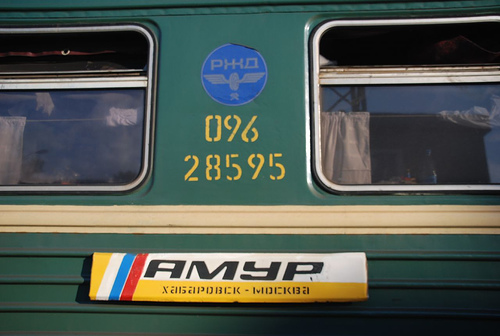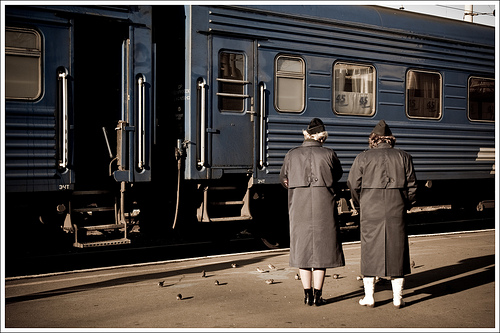Guide to Russian Trains
Russian Trains Survival Guide
Then there are also different classes of the trains. As you perhaps know, Russians with money love luxury, so, please, leave the 1st class to them. You won't find more overpriced, kitschy, and useless train compartments anywhere else in the world. Unless you really need better beds, want to check out the experience, or really need a private shower for the extra $100 / day, then you'll want to know that 1st class is called "lux" or "spalny vagon" ("sleeper carriage") in Russian and that there are usually two beds in there, but sometimes you also get a TV and DVD player as well.
The 2nd class (called "kupe" in Russian) varies in quality, but it may be a good option when you want complete privacy. In this case you can buy out the whole compartment (4 bunk beds) and it'll still be cheaper than 1st class. There's also a lock on these compartments, but they can only be locked from inside.
The 3rd class (called "platzcart" in Russian) is a common carriage, meaning that you share the whole carriage with other people, but, of course, you've got your own bunk bed. It is actually the safest option if you're traveling along, especially for women, because there are always people around, so you won't risk getting stuck with unwanted neighbors in your "kupe" 2nd class compartment. "Platzcart" is a bit more dirty and stinky than "kupe", but you'll get used to it and it's much better to meet people this way.
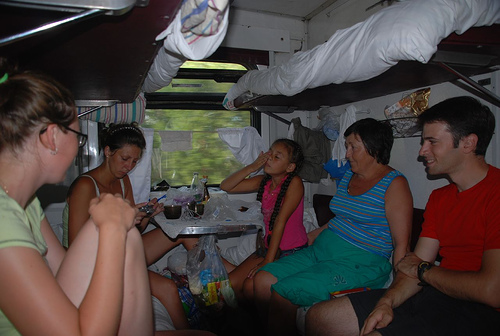
There are restaurant carriages on long-distance trains, and we can recommend eating there at least once just for the experience. However, the best thing is that every stop (usually 10-20 minutes) there are old women selling home-made food outside of the train. You can buy great soups, home-made potatoes, meat, fish, sweets – everything you like. That's what most of the people do anyway. Also, a very typical Russian train snack is tea is the special metal glasses, eggs, salted cucumbers, rye bread, and vodka – make sure you pack some for your journey!
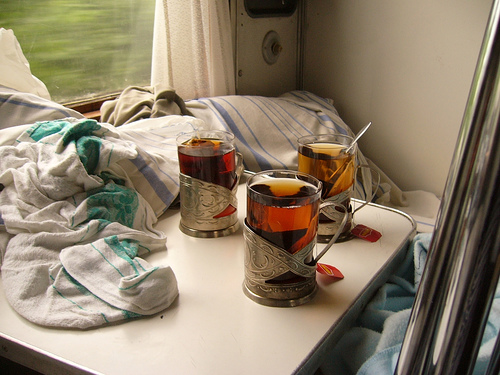
Buying a Train Ticket in Russia
Second, you can only buy a train ticket not earlier than 45 days before your departure.
Third, even though the "electronic tickets" are available since 2009, you can't just print them out and take a train. You would need to go to a special ticket sales office before you board the train with your print-out and get the real ticket before you board the train – so this is not so efficient (but hey, it's a progress :) Some trains by the way have check-in onboard, but you have to check this beforehand and make sure they do have one, otherwise you won't be allowed on the train.
Finally, Russian Railways never pay commissions on their tickets to the agents, so if you buy a ticket, you'll have to pay a markup (from €3-€10 in the Russian Railway's own sales points to 25-50% online).
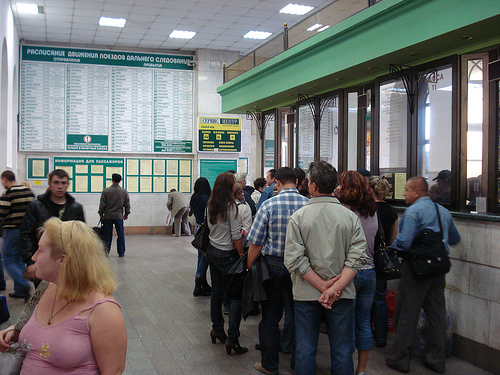
Queue to buy a train ticket / photo by aaronray@FlickR
So, if you decided to buy a Russian train ticket, you've got several options basically. You can do it online through one of the many agencies out there (and pay a higher markup) or go directly to the station and do it yourself. In the latter case you'll probably pay less markup, but no one will speak English and you'll have to queue for quite a long time. If you buy your ticket online or through an agent, you should make sure they know which trains are good and which ones are bad, especially for the Trans-Siberian ones. You don't want to spend 4 days in a train, which is notorious for being badly serviced or carrying murder convicts to a prison in Siberia in a heavily guarded carriage next to yours (although you might actually be into the whole thing for the experience, who knows :)
Also, remember, that to buy a train ticket and to board a Russian train you need to always present your passport.
Russian Train Stopovers
Getting to Russia by Train
The average return ticket from western European countries to Moscow if you use trains, will cost you from €250. The closer you are to Russia the cheaper it is, especially from the Baltic States.
There are no rail passes for Russia, but if you have an international rail pass the price might be much cheaper, depending on the option you choose. Perhaps the most interesting one is Eurail (www.eurail.com), which gives you unlimited 2nd class travel in many Western European and Scandinavian countries.
You can find out more about different train routes, timetables, and prices in our Train Timetables section.
Beware: Transit Visas
If you're traveling to Russia from China, you may need a Mongolian transit visa (unless you're a US or Israeli citizen), check with their embassy beforehand. Alternatively, you can take a train bypassing Mongolia, which takes another route to Russia around the country.

